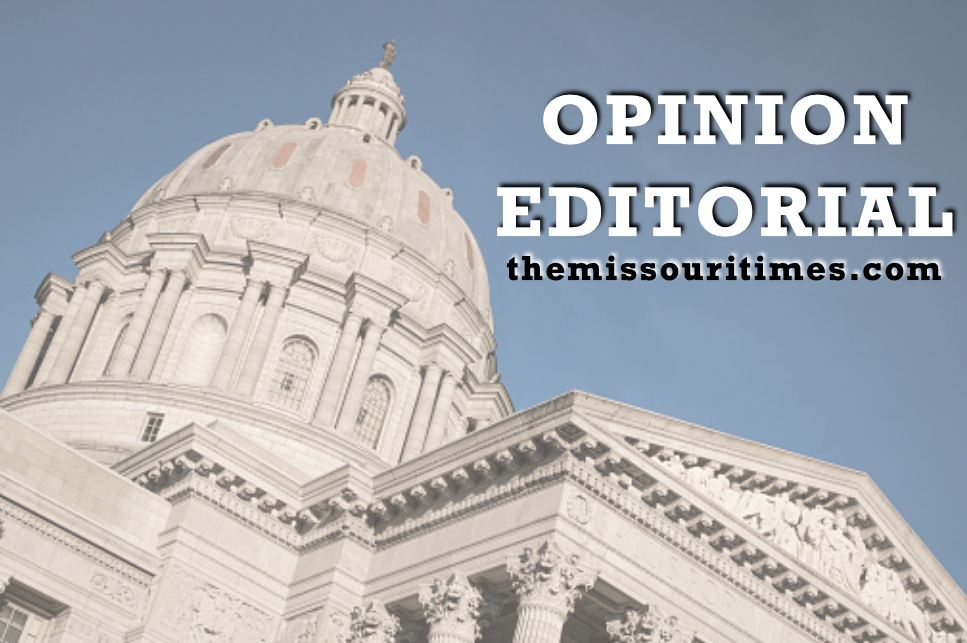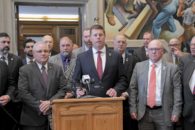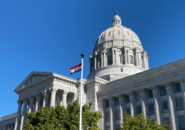This article originally appeared in the Fall 2020 edition of The Missouri Times Magazine.
The first patient in the U.S. with COVID-19 was identified on Jan. 21, 2020, and the Department of Health and Senior Services (DHSS) and the Governor’s Office set up an Incident Management Team on Jan. 27 to monitor and prepare for any eventualities. As Mark Twain said, “The secret to success is to get started.”
As I write this at the end of August, through the incredibly hard work of many Missourians, we have the 18th lowest case rate per capita and the 18th lowest mortality rate of all 50 states. We have reduced our mortality rate from 7 percent of cases in April to less than 1 percent of cases in August and helped pioneer a nationally recognized box-in strategy that we have used in our congregate living facilities and meatpacking plants to avoid the overwhelming outbreaks seen in other states.
On March 2, I told the Missouri House Special Committee on Disease Control and Prevention that we would be prepared because of the strong foundation in Missouri — a foundation that includes a robust hospital system, our medical providers, our local public health agencies, and the ability of our state government to work with each other and our local community governmental leaders under Gov. Mike Parson’s leadership in a whole-of-government approach as a force multiplier of these assets. I specifically emphasized the state government’s role was to communicate, coordinate, and collaborate in a crisis. It is so important that we use subject matter expertise and data driven by science to help inform our decisions when dealing with a novel emerging infectious disease. We must be prepared to constantly learn and adapt as new clinical information is gathered.
Gov. Parson has led Missouri in both developing policies and listening to the diverse experiences of all Missourians. The governor and I have participated in more press briefings than perhaps any other governor and DHSS director in Missouri’s history because we think it is so important to communicate in a crisis. Gov. Parson has listened through a total of 126 phone calls with mayors, religious leaders, infectious disease experts, hospital administrators, school districts, federal delegates, county executives and commissioners, and other local leaders. Each Monday, I lead a COVID-19 ECHO virtual learning session with 200 health care providers in mid-Missouri. On Wednesdays, I talk with hospital intensivists in Kansas City. For the past five months, I’ve begun each Saturday morning talking with members of the Missouri State Medical Association. Following this is also a weekly call every Saturday with Gov. Parson and infectious disease doctors throughout Missouri. This collaboration has helped us immensely as we coordinate the state’s response which is always evolving.
It is vital that the government’s response to a public health crisis be nimble. Missouri has worked with Washington University and the Missouri Hospital Association to build out an incredibly robust data set based specifically on Missouri data. To do that, the state put a huge emphasis on testing, and we went from processing 17,000 tests per week to more than 100,000 tests per week through 26 laboratories. New types of tests have been introduced, including point-of-care PCR tests with rapid results, antibody, and antigen tests. We are now moving toward saliva-based PCR tests developed by scientists at Washington University. This emphasis on testing allowed us to adopt our boxed-in strategy, testing every resident and staff member when a single case is reported in a long-term care facility. To date, more than 130,000 tests have been run in over 500 of the state’s 1,200 licensed nursing homes. These actions are saving lives. We also helped pioneer the rapid distribution of the antiviral remdesivir to physicians and hospitals throughout Missouri by both air and land using our partners at the Missouri National Guard, Missouri State Highway Patrol, Disaster Medical Assistance Team, and State Public Health Lab.
Working closely with our local public health agencies and the Department of Elementary and Secondary Education, we are committed to the American Academy of Pediatrics’ proposition that school is really important for our children, and we believe we can work together to make that happen safely. We are also working deliberately to increase the number of people who get vaccinated against the flu this season. This will help decrease the pressure on our health care systems.
Missouri will continue to be a national thought leader while meeting our citizens’ needs as we move into the fall. Pfizer in St. Louis has received $1.9 billion to develop a messenger RNA vaccine that we hope will be available to vulnerable populations as early as December. This is one of several that is being developed internationally for use in the U.S., and we greatly appreciate our partners at SLU and in Kansas City who are engaged in Phase 3 clinical trials.
But in the meantime, we have to build a bridge until we get there, and part of that is meeting the challenge we currently face of increased cases among 20 to 30-year-olds. While we are thankful we have not seen a corresponding increase in hospitalizations and deaths from this age group, we don’t want anyone to get COVID-19 in Missouri. While there is “high risk” and “low risk,” I learned there is no such category of “no risk” while taking care of patients as a doctor for 30 years. Being infected with COVID-19 means having to isolate, having those close to you being quarantined, and exposing those around you who may have increased vulnerability to a potentially life-threatening disease.
Gov. Parson says we have proven that we are not defenseless against this virus and by communicating, coordinating, and collaborating, that has certainly been true. Adversity doesn’t build character; it reveals character. While we mourn the loss of life we have seen and the morbidity this virus has caused, I am greatly appreciative that this pandemic has revealed the character of Missourians. When faced with adversity, citizens have worked together to multiply our capabilities to significantly decrease the morbidity and mortality of this unique novel virus which is truly as it is often described: unprecedented.

Dr. Randall Williams serves as Missouri’s Department of Health and Senior Services director. He is an obstetrician and gynecologist who received his medical training from the University of North Carolina where he was a Holderness Fellow. Dr. Williams previously served as the state health director in the Department of Health and Human Services in North Carolina and has served the medical needs of people in overseas conflict zones.









